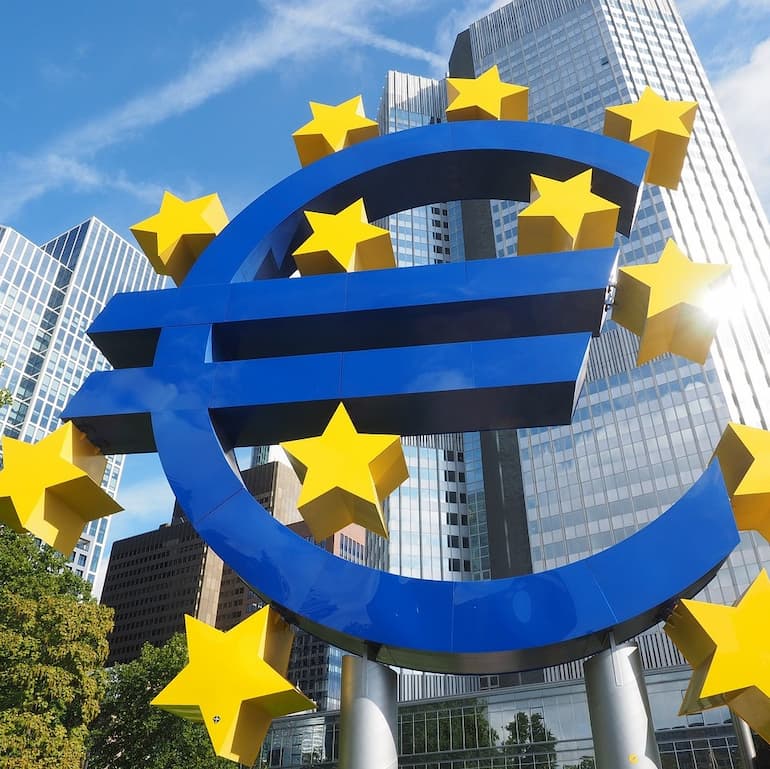
Investment managers are debating the implications after euro zone inflation rose slightly in May, raising speculation about when the European Central Bank might cut interest rates.
Euro zone inflation rose to 2.6% in May from 2.4% due to services inflation, according to a flash estimate released on Friday by the European Union's statistics office, Eurostat.
This has raised concerns about whether the European Central Bank (ECB) will cut interest rates on June 6, but it is still broadly in line with market expectations, stoking speculation that it may not lead to any changes to the timing of the ECB's first rate cut in 2024.
The latest figures also hide differences between member states, with inflation standing at 5% in Belgium, 2.8% in Germany, 2.7% in France and just 0.8% in Italy.
Core inflation, which excludes volatile fuel and food prices, also rose to 2.9% from 2.7% in April. The ECB has said interest rates, currently at a high 4%, will be set at a sufficiently subdued level for as long as necessary to ensure a timely return of inflation to its 2% target.
German bund yields, a gauge of euro zone borrowing costs, rose to their highest level in six months after the inflation data was released.
Here are some investment managers reacting to the figures:
Daniele Antonucci, chief investment officer at Quintet Private Bank (Brown Shipley's parent company)
“A slight increase in euro area inflation is not a reason for the ECB to refrain from cutting interest rates next week. Overall, we believe inflation is closer to target and that starting to cut rates is justified. Forward-looking indicators suggest that demand pressures are now more normalized, while supply factors are also less of a factor.”
“All of this suggests that wage growth will slow at least somewhat going forward, which is a key factor for the ECB to continue lowering rates after the initial one or two cuts. Thus, the pace of rate cuts beyond next week remains quite uncertain. In our view, the ECB should be able to cut rates two or three more times this year, probably not consecutively. However, even if the domestic economy weakens and inflation falls slightly, rapid rate cuts are unlikely because US inflation looks solid. This means that if the Fed does not cut rates for a while, the ECB may hold off on cutting rates.”
“If euro area interest rates fall significantly relative to the US, there is a risk that the euro will weaken against the US dollar, as exchange rates tend to be driven by interest rate differentials in the short term. This would lead to faster import price inflation in the euro area, putting the central bank's inflation target at risk.”
Michael Field, European market strategist at Morningstar
“Higher than expected inflation in May will make some investors nervous, especially as the rise is driven by services inflation, an area where the European Central Bank has previously expressed concern. While such an increase is unsettling, we see no reason to panic, especially after successive declines.”
“First, and most importantly, inflation is never going to fall in a perfectly linear fashion to the ECB's 2% target. The ECB had previously forecast inflation falling to 2.3% by the end of the year. Inflation is at 2.6%, but with seven months left in the year, there is plenty of time for it to fall further.”
“Inflation rates in May varied widely across the euro area, with inflation rising to nearly 5% in Belgium but below 1% in Italy. This difference highlights that labour market tightness is country-specific rather than a widespread euro area trend, making further increases in inflation unlikely as the year progresses.”
“There may be bumps ahead, but we've come a long way and the trend is still downwards. Of course, a bit more decline in inflation in May would add to the benefits of the rate cut, but more than 90% of economists polled expect the ECB to cut rates in June, and such a small rise in inflation as this one is unlikely to prevent this.”
Neil Birrell, chief investment officer at Premier Mitten Investors
“Eurozone inflation came in slightly stronger than expected in May, but not enough to stop the ECB from starting a rate-cutting cycle next week. The numbers were not cause for concern and the trajectory of the decline in the Consumer Price Index (CPI) has not flattened. The trend continues to move in the right direction and the economy needs the support of rate cuts.”

